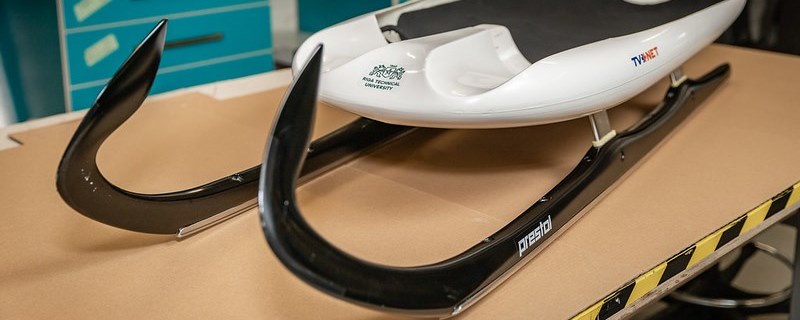RTU scientists help to improve the equipment of Latvian luge athletes
Latvian luge athletes this season, starting at home and on international tracks, carry the name of Riga Technical University (RTU), as the RTU logo appears on athlete’s sleigh. This confirms that the Latvian toboggan team’s sleds have been improved at RTU Design Factory with the support of RTU scientists. The RTU logo will be displayed on the sleigh on December 28, when luge athletes will fight for the Latvian Cup in Sigulda.
The Latvian Basketball Federation has been cooperating with RTU since 2017 in the development and technical development of sports sleighs and special equipment. During this time, 3D laser scanning and modeling has been carried out at the RTU Design Factory to improve the aerodynamics and mechanical properties of the sleigh, tailored individually for each athlete.
The RTU Design Factory also prints out individual parts mounted on sleighs and acting as vibration damping elements using 3D printers. “It helps athletes to maintain stability on the track, and makes sleighs easier to control during the ride and, thus, more accurately steered,” says Martins Rubenis, Olympic medalist and now Latvian national team coach and mechanic.
Ultrasound tests have been carried out with Kaspar Kalniņš, a scientist at the RTU Faculty of Civil Engineering, Institute of Materials and Structures, to optimize the interaction of sleigh construction materials. RTU has also tested various materials that may be more suitable for sledge jointing.
Latvian sledging team RTU improved its equipment also in 2018 in preparation for the start of the Winter Olympics in Pyeongchang, South Korea. At that time, the Design Factory created the so-called penguins – special needle caps that are attached to gloves at the tips of the fingers to help athletes kick off the ice more forcefully.
The sleigh RTU is continuously improved, even during the same season between races, as each improvement gives athletes a hundredths of a second, which is crucial for athlete performance.
The next step, together with scientists from the RTU Institute of Design Technology, is to begin developing customized overalls for athletes, using a body scanner and creating accurate patterns.


